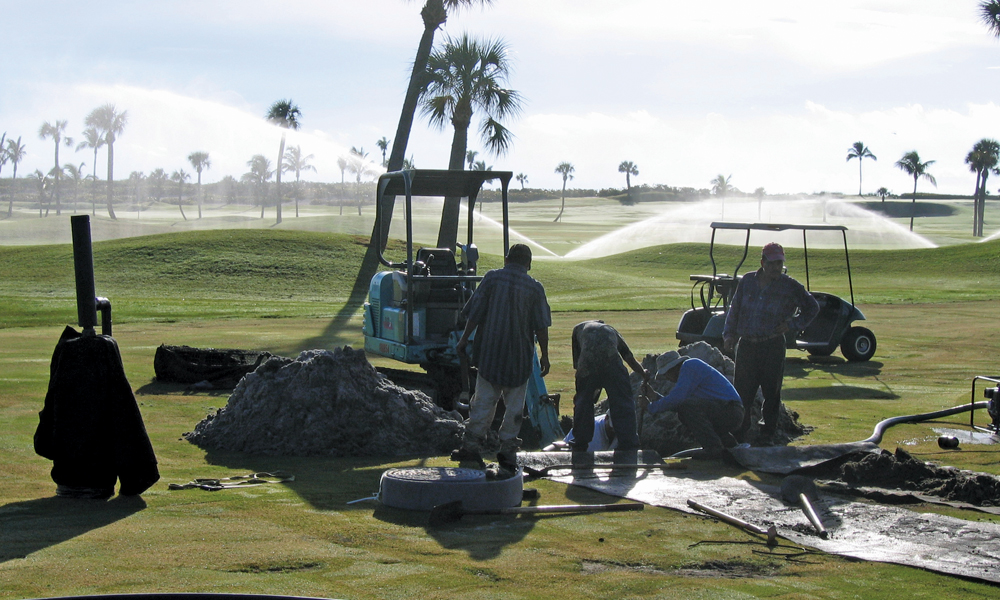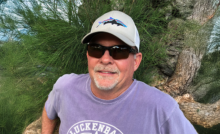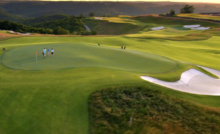Water On … Water Off


Turf Drainage Co
For golf course superintendents, water tends to be too scarce or too abundant, or ironically, it can be both at the same time. This month, Golf Course Trades spoke with two golf industry companies recognized for delivering innovative solutions, one for irrigation and the other for drainage.
WATER ON
Founded in 1996, Aqua Turf International (ATI) specializes in irrigation design, consulting and GPS mapping for golf courses and other types of irrigated turf. Truly an international company, Aqua Turf International was launched by founder Jim Schumacher in South Florida and today has offices in Tequesta, Florida, Bangkok, Thailand, and Beijing, China.
Partner and company spokesperson, Sean Hyduk, cited ATI’s international perspective and wide-ranging experience as one of the company’s greatest strengths. Having dealt with limited water supplies, adverse water conditions, reverse osmosis and other diverse water-use applications, ATI understands the unique requisites of designing or consulting on systems, whether the challenge is salt water in the Bahamas, elevation changes in the mountains of Utah or the arid, wind-blown sands of the Middle East.
EVEN IRRIGATION HAS A LIFE CYCLE
Sean explained, although irrigation is one of the most critical components of a golf course, it’s rarely on the mind of golfers and club members until it ceases to function correctly. Understanding that irrigation systems represent a significant investment for most courses, Sean is not surprised that some golf course superintendents describe the process of updating irrigation as ‘burying gold.’
In fact, although the company works with projects of all sizes, the cost of installing a golf course irrigation system can be well over a million dollars. Designed or installed incorrectly, the operational costs of the system can skyrocket. Fortunately, advances in technology have resulted in today’s irrigation systems being more efficient and longer lasting than the systems installed in the 1980s, 1990s and even more recently.
Research provided by the American Society of Golf Course Architects and compiled in conjunction with the USGA Green Section, Golf Course Builders Association of America and the Golf Course Superintendents Association of America cites the following life expectancy for golf course irrigation systems.
- Irrigation System 10-30 years
- Irrigation Control System 10-15 years
- PVC Pipe (under pressure) 10-30 years
- H.D.P.E pipe 40-60 years
- Pump Station 15-20 years
Aqua Turf International responds to the need to work with budgets, is sensitive to down time and strives to meet club goals. Sean explained, ‘Our success begins with our ability to listen. Our company does really well at listening. And because we have global offices and across-the-board experience working with all types of irrigation needs, we can offer creative solutions delivered through a team approach.
‘We design all types of irrigation systems using materials and methods necessary to meet each club’s desires, budget and goals. We want the industry and our market to recognize that we conform to our clients’ needs, not the other way around.’
INDEPENDENT AND UNBIASED
Because ATI is not associated with any one manufacturer, its consultants can recommend balanced and unbiased solutions. Moreover, ATI is proud that its consultants are not sales professionals but come from intensive backgrounds in golf that include golf course architecture, landscape architecture, course maintenance, golf course construction, golf operations and, of course, every aspect of irrigation design and operations.
Summarizing the ATI team, Sean said, ‘We are stewards of the environment, our natural resources and our clients’ resources.’
To learn more about Aqua Turf International, Inc. and to view the extensive list of courses in the U.S. and around the globe that have benefited from ATI services, go to www.aquaturfintl.com.
WATER OFF
Defining its process as ‘turf drainage done right,’ the Turf Drainage Company of America (TDA) has been providing golf course drainage solutions for more than thirty years. When company President Dennis Hurley left his home state of Kentucky as the recipient of an LSU golf scholarship, he didn’t expect to make Louisiana his home or to one day launch a business in Marrero, just outside of New Orleans.
Dennis, whose roots in the game go back to his days as the 1962 National Pee Wee Golf Champion and include his 2005 induction into the Legends of Cincinnati Golf, is a problem solver by nature. He recognized that the industry needed a way to fix drainage issues that did not involve closing the golf course. When you think about it, where else is the challenge of effective drainage more evident than in the alluvial lowlands of southern Louisiana? In fact, as Dennis worked to develop prototypes of his patented Turf Drain Siphon System, he was known to throw garden hoses over the roof of his house to create gradient for testing the capabilities of his designs.
Although he may have puzzled his neighbors, Dennis’ efforts paid off. Today the company holds four patents in the field of seepage drainage, including, Turf Drain. the company’s flagship product.
SURFACE WATER, SEEPAGE OR BOTH
Course architect and shapers work to avert drainage problems, yet over time, a course inevitably changes. TDA representatives have help hundreds of courses with drainage problems, delivering Master Drainage Plans that identify drainage issues and provide to the membership, a detailed solution that doesn’t require closing the course for renovation.
Drainage issues, Dennis explained, come in two types. Ponded or streaming water after a rain event is a surface water problem. Surface water solutions require the proper location of basins and the calculation of the correct pip size to move the water off the property.
Seepage water is water trapped within the soil. It may occur with or without the presence of surface water and results from a combination of factors, including the soil’s permeability, the pressure gradient, the water table and other dynamics. In fact, seepage may have originally been surface water elsewhere on the property. Although re-grading, using an open inlet system, and using seepage drainage are effective solutions, Dennis pointed out that all successful drainage systems are a combination of surface and seepage tools.
DRAIN AND PUMP: A FEW OF TDA’S TOP PRODUCTS
Dennis introduced Turf Drain, the first ‘waffle drain’ to the golf course industry at the 1985 GCSAA conference in San Francisco. Turf Drain can be used anywhere four-inch perforated pipe can be used. Turf Drain has almost 50 times more airspace per linear foot to collect water and, most importantly, uses sand backfill instead of gravel, which allows the system to meet the same engineering requirements as those demanded by highly technical civil engineering projects such as dams and highways.
The Turf Drain Siphon System is the first system that makes it possible to install drainage without the need to grade pipe. Piping can go over mounding or into an ungraded trench. Specific applications for this system include flat or rocky terrain or any area with underground obstructions.
Irrigation Driven Pumps (IDP) are a proprietary product of Turf Drainage Company of America. Using the energy of the irrigation system to pump drainage water, the IDP can be put to work in areas of the course that are difficult to reach with electrical service. Low cost and with no moving parts, the IDP is easy to maintain.
FIVE STEPS TO REMEMBER, PERHAPS SIX
Superintendents dealing with drainage issues may find the following checklist helpful:
- Always evaluate the drainage situation during a rain event.
- Categorize the problem as surface water, seepage water or both.
- Review watershed above the problem area.
- Never use dry wells to dispose of unwanted water through dissipation into the ground.
- Finally, once water is in a pipe, make sure that it exits the property.
Many superintendents discover that a sixth step of contacting an experienced professional to assess the situation and recommend long-term solutions, outlined in a comprehensive Master Drainage Plan, affords them the optimal resolution to their problem.
To contact Turf Drainage Company of America or to find out when one of the company’s representatives will be in your area, go to www.turfdrain.com.
Recent Posts
Discover Puerto Rico for Great Golf Trips and After-Round Activities, Amenities
Golfers cannot live by the game alone which is why Puerto Rico provides the perfect…
Q&A with a Multi-talented Golf Course Architect – Part 2: Making the Rounds – Installment 39
This column features recollections of the author’s 37 years as a golf writer. These installments…
With LOKSAND, Bunker Faces & Edges ‘Aren’t Going Anywhere’
LOKSAND Global has announced North American availability of the stabilization product LOKSAND (www.loksand.com), in addition…
One of the Biggest Jobs in Golf
When Rory McIlroy finally slipped into the Green Jacket on Sunday, April 13, 2025, after…
Audubon International Marks Earth Day In Growth Mode
As the world celebrates Earth Day on April 22, Audubon International – the environmentally focused non-profit…
Help keep golf sustainable by bidding in GCSAA’s Rounds 4 Research online auction
In celebration of Earth Day, you can help fund the research that advances golf’s environmental…


